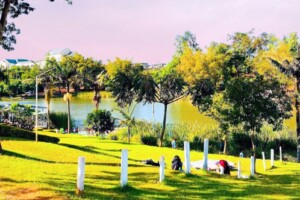Hidden in the green coastal area of Watamu, Kenya, are the interesting Gedi Ruins.
These old ruins, from the 12th century, are one of Kenya’s most interesting and least-known historical places.
The remains of Gedi, which used to be a busy Swahili town, have fascinated people for many years.
Visitors can sense the history around them as they walk through what is left of this lively community.
But why were archaeologists so amazed by the Gedi Ruins?
The Lost City of Gedi
The Gedi Ruins were hidden in thick forests for a long time and were only found again in the 1920s.
Gedi might not be as famous as Egypt’s pyramids, but it has a lot of history to offer.

The town used to be a busy place for trading and had connections with places as far away as China and Persia.
The pottery, coins, and beads found here show that this community was advanced and lived before their time.
What archaeologists found surprised everyone: Gedi was a city that had been forgotten by time.
What Did Archaeologists Discover at Gedi Ruins?
Gedi Ruins left experts with more questions than answers.
The advanced architecture, including elaborate stone houses, a palace, and even a mosque, suggested that Gedi was a well-organized city.
Archaeologists discovered coral stone walls and sophisticated drainage systems that speak of an advanced civilization, far ahead of what was expected in coastal East Africa during that era.
But the biggest shock came when they realized that there was no clear reason for Gedi’s abandonment.
Why would such a thriving city be deserted? No records explain its downfall, no signs of war, and also no evidence of famine or disease.
Gedi Ruins continue to puzzle historians today.

Gedi’s Age and Influence
The Gedi Ruins are believed to be at least 600 years old, having reached their peak between the 13th and 17th centuries.
Gedi was strategically positioned along the Indian Ocean, making it an important trade hub.
The ruins reflect the multicultural influences that shaped the Swahili coast, from Arab to Asian connections.
Despite its wealth and sophistication, Gedi mysteriously fell into ruin, its inhabitants seemingly vanishing without a trace.
Visiting the Gedi Ruins Today
Today, Gedi Ruins is a UNESCO World Heritage site, welcoming visitors to experience its strange beauty.
Walking around its old streets, you can almost feel the history all around you.
Visitors see tall stone pillars, old house remains, and the quiet beauty of what used to be a mosque.
It’s a place where the past feels stuck, creating a mysterious feeling that stays with you even after you go.




